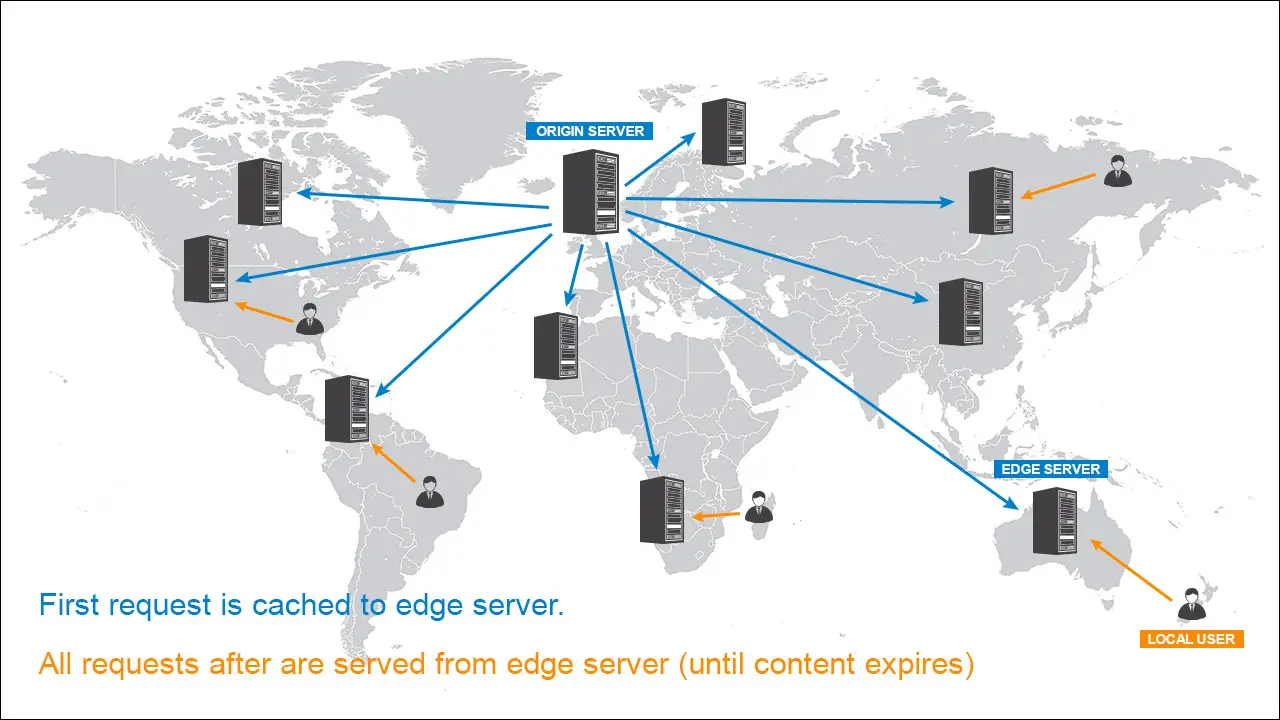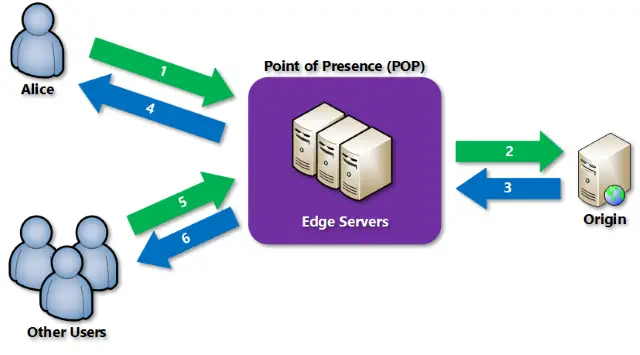Integration of CDN Services in Modern Web Development Practices

Introduction
Content delivery networks (CDNs) have become an integral part of modern web development, significantly improving website performance, reliability, and accessibility. This article explores the benefits and best practices of integrating CDN services into web development practices.
Benefits of CDN Integration

- Increased website speed: CDNs cache static content (e.g., images, CSS, JavaScript) in servers located near users, reducing latency and improving page load times.
- Improved scalability: CDNs handle high traffic volumes by distributing content across multiple edge servers, preventing website outages and ensuring continuous availability.
- Reduced bandwidth costs: By caching content locally, CDNs reduce the amount of data transferred from the origin server, saving on bandwidth expenses.
- Enhanced security: CDNs offer built-in security features, such as SSL certificates and DDoS protection, protecting websites from malicious attacks.
- Global reach: CDNs have servers in various geographic locations, ensuring fast and reliable content delivery to users worldwide.
Best Practices for CDN Integration

- Choose a reliable CDN provider: Select a CDN that offers a wide range of services, has a global network, and provides excellent support.
- Configure CDN settings: Set up the CDN to cache appropriate content, including images, CSS, JavaScript, and media files.
- Enable HTTPS: Use HTTPS to secure the connection between the CDN and users, protecting data transfer.
- Use CDN subdomain: Create a dedicated subdomain for CDN content to avoid conflicts with the main domain.
- Monitor CDN performance: Regularly monitor CDN performance to ensure optimal functionality and identify areas for improvement.
- Purge and invalidate content: Regularly purge outdated or changed content from the CDN cache to prevent serving stale data.
- Optimize content for CDN: Use image compression, CSS/JavaScript minification, and other optimization techniques to reduce file sizes and improve CDN efficiency.
Conclusion
Integrating CDN services into modern web development practices is essential for enhancing website performance, scalability, security, and accessibility. By implementing best practices, developers can effectively harness the benefits of CDNs to deliver a superior user experience and drive business success.## The Integration Of Cdn Services In Modern Web Development Practices
Executive Summary
Modern web development practices heavily rely on the integration of CDN services to enhance website performance, optimize user experience, and cater to the growing demands of a global audience. CDN integration provides numerous advantages, including improved page load speeds, reduced latency, increased website availability, enhanced security measures, and cost-effective scalability solutions. This comprehensive article delves into the key subtopics related to CDN integration, highlighting its benefits, implementation strategies, best practices, and real-world examples.
Introduction
In the fast-paced digital landscape, website performance and user satisfaction play a crucial role in driving website success. CDN services have emerged as essential tools in modern web development practices, enabling websites to deliver content seamlessly and efficiently to users worldwide. By leveraging geographically distributed servers, CDN integration optimizes content delivery, ensuring that users experience lightning-fast page load speeds, reduced latency, and uninterrupted access to website resources.
Frequently Asked Questions (FAQs)
1. What is a CDN (Content Delivery Network)?
A CDN is a network of interconnected servers deployed across multiple geographical locations, designed to deliver content, such as web pages, images, videos, and other digital assets, to end-users with improved performance and reliability.
2. How does CDN Integration Benefit Websites?
CDN integration offers significant benefits, including accelerated content delivery, reduced website latency, increased website uptime, enhanced security measures, and cost-efficient scalability solutions.
3. How to Choose the Right CDN Provider?
Selecting the optimal CDN provider involves assessing factors such as network coverage, pricing models, security features, customer support, and CDN capabilities that align with specific website requirements.
Key Subtopics
1. CDN Architecture
CDN architecture forms the backbone of content delivery efficiency. It consists of a network of edge servers located strategically across the globe. When a user requests content from a website, the request is routed to the nearest edge server, reducing the distance between the user and the content, resulting in faster load times and reduced latency.
- Edge Servers: The foundation of CDN architecture, edge servers are responsible for caching and delivering content to users, ensuring proximity and optimized performance.
- Caching Mechanisms: CDN services employ sophisticated caching mechanisms to store frequently requested content on edge servers, enabling instant delivery and minimizing server load.
- Load Balancing: CDN architecture utilizes load balancing techniques to distribute user requests across multiple edge servers, preventing server overload and maintaining consistent performance.
2. CDN Benefits
Integrating CDN services into web development practices brings forth a multitude of benefits:
- Improved Page Load Speeds: CDN integration significantly reduces page load times by delivering content from the nearest edge server, resulting in a seamless user experience and increased user engagement.
- Reduced Latency: CDN services minimize latency, the delay in data transmission, by geographically distributing edge servers, ensuring that users experience near-instantaneous content delivery.
- Increased Website Availability: CDN integration enhances website availability by providing redundant edge servers, ensuring that content remains accessible even in cases of server outages or high traffic.
- Enhanced Security Measures: CDN services incorporate robust security features such as SSL encryption, DDoS protection, and content expiration policies to safeguard websites and user data.
- Cost-Effective Scalability: CDN integration offers cost-efficient scalability solutions, allowing websites to handle sudden traffic spikes and fluctuations without incurring significant infrastructure investments.
3. CDN Implementation
Implementing CDN services requires careful planning and execution:
- Content Selection: Identify the content that will benefit most from CDN integration, such as static assets, images, videos, and JavaScript files.
- CDN Provider Selection: Choose a CDN provider that aligns with website requirements, considering factors such as network coverage, pricing models, and security features.
- CDN Setup and Configuration: Configure the CDN service by integrating it with the website’s DNS settings and specifying the content to be delivered through the CDN.
- Monitoring and Optimization: Continuously monitor CDN performance, track metrics such as load times and user experience, and make adjustments as needed to optimize content delivery.
4. CDN Best Practices
Adhering to best practices ensures optimal CDN performance:
- Content Optimization: Optimize content for faster delivery by reducing file sizes, implementing lazy loading, and leveraging compression techniques.
- Cache Control: Implement effective cache control mechanisms to manage content expiration and ensure efficient caching strategies.
- Monitoring and Analytics: Track CDN performance metrics and analyze user behavior to identify areas for improvement and fine-tune CDN configurations.
- Security Considerations: Prioritize security measures such as SSL encryption, access control, and CDN logs to protect website data and user privacy.
5. CDN Case Studies
Real-world examples demonstrate the tangible benefits of CDN integration:
- E-commerce Website: A leading e-commerce platform implemented a CDN to reduce image load times, resulting in a 15% increase in conversion rates.
- Media Streaming Platform: A video streaming service leveraged a CDN to enhance video quality and reduce buffering, leading to improved user satisfaction and increased viewership.
- Global Enterprise Website: A multinational enterprise integrated a CDN to optimize content delivery across continents, significantly improving website accessibility and user experience.
Conclusion
Integrating CDN services has become an essential practice in modern web development. By leveraging geographically distributed servers, CDN integration accelerates content delivery, reduces latency, enhances website availability, strengthens security measures, and offers cost-effective scalability solutions. Embracing CDN integration empowers website owners to deliver a seamless and engaging user experience, drive website performance, and maintain a competitive edge in the digital landscape.
Relevant Keyword Tags
- CDN Services
- Content Delivery Network
- Web Development
- Website Performance
- User Experience
